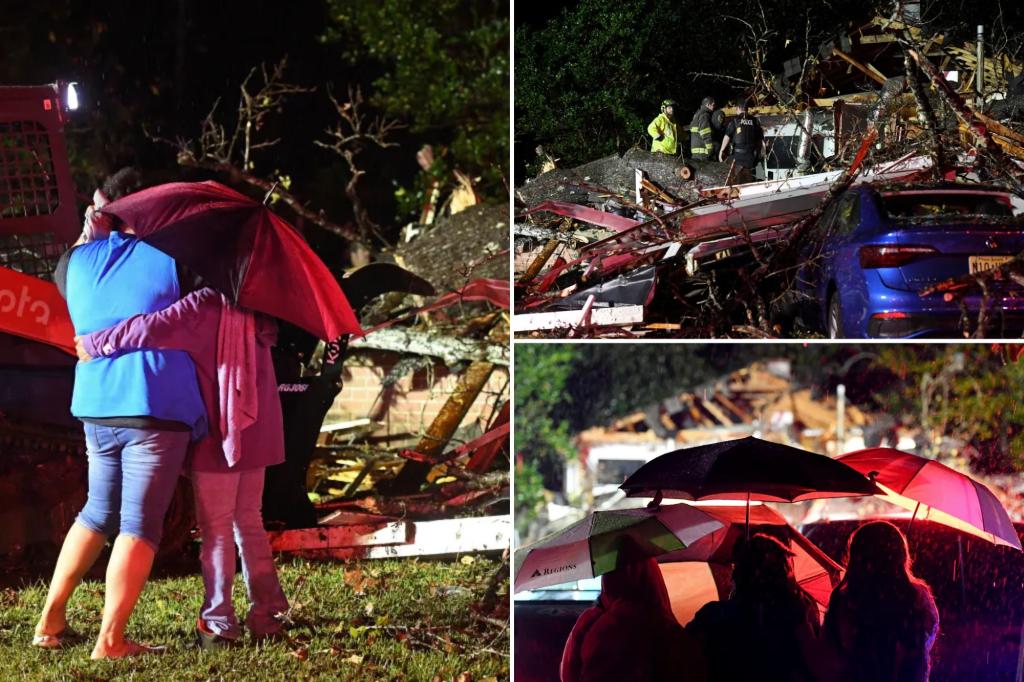The severe weather system that swept across Texas and Mississippi on Saturday, March 25, 2023, left a trail of destruction in its wake, claiming at least two lives and injuring several others. Multiple tornadoes touched down in both states, ripping apart homes, overturning vehicles, and disrupting power supplies to tens of thousands of residents. The storms, which began in the afternoon and continued into the night, prompted warnings from the National Weather Service and necessitated swift responses from emergency management agencies.
In Texas, the hardest-hit area appeared to be Brazoria County, south of Houston, where one fatality was reported and four individuals sustained non-critical injuries. The county experienced multiple tornado touchdowns between Liverpool and Hillcrest Village, and between Alvin and other areas. Initial assessments indicated at least ten homes were damaged, with the full extent of the destruction yet to be determined. Further north, in the Katy and Porter Heights areas, mobile homes bore the brunt of the storm’s force, suffering damage and destruction. A fire station in Porter Heights also experienced significant damage, with its doors blown in by the powerful winds.
The impact of the storms extended beyond residential areas. Both of Houston’s major airports, Bush Intercontinental and Hobby, experienced departure delays exceeding an hour due to the severe weather conditions. This disruption highlighted the widespread effects of the storm system on transportation and travel in the region.
Mississippi also faced the destructive power of the tornadoes. One fatality was reported in Adams County, and two individuals were injured in Franklin County. The National Weather Service confirmed two tornadoes hit near Bude and the city of Brandon, causing significant damage to several buildings, including roof removals. The storms left a significant number of Mississippi residents without power. By early Sunday morning, over 88,000 customers were still without electricity, a slight decrease from the peak of 93,000 around 1 a.m.
The Mississippi Emergency Management Agency (MEMA) focused its initial efforts on ensuring public safety and accounting for all residents. With first responders prioritizing immediate needs, comprehensive damage assessments were slated to begin in the early morning hours following the storms. The widespread power outages underscored the significant impact of the tornadoes on the state’s infrastructure and the challenges faced by residents in the aftermath.
The storms generated considerable concern as they moved eastward. Meteorologists warned of the potential for the weather system to intensify overnight, posing further risks to communities in its path. Josh Lichter, a meteorologist with the National Weather Service, emphasized the likelihood of worsening conditions as the storms progressed eastward. This warning highlighted the dynamic nature of the weather system and the need for continued vigilance and preparedness.
The initial reports and observations from the affected areas pointed to the significant strength and destructive capability of the tornadoes. In Texas, the multiple touchdown points and the damage observed in various locations suggested a series of powerful tornadoes or a single, long-track tornado impacting a widespread area. The damage to mobile homes and the fire station, including blown-in doors, further illustrated the intensity of the winds associated with these storms. The reports of roofs being ripped from buildings in Mississippi echoed this pattern of significant structural damage.
The power outages experienced in both states underscored the vulnerability of critical infrastructure to severe weather events. The large number of customers affected by the outages had significant implications for residents, businesses, and essential services. The extended duration of the outages further compounded the challenges faced by communities in the storm’s aftermath, highlighting the need for robust power grid resilience and effective restoration efforts.
The coordinated response of emergency management agencies and first responders played a crucial role in addressing the immediate needs of affected communities. The prioritization of safety and accounting for all residents demonstrated a commitment to protecting human life in the face of the disaster. The subsequent damage assessments would provide a more comprehensive understanding of the extent of the destruction and inform recovery efforts.
The severe weather outbreak served as a stark reminder of the destructive power of tornadoes and the importance of preparedness and early warning systems. The rapid onset and intensity of the storms highlighted the need for individuals and communities to have emergency plans in place and to heed warnings from authorities. The events of Saturday emphasized the vital role of weather forecasting and communication in mitigating the impact of such severe weather events.










